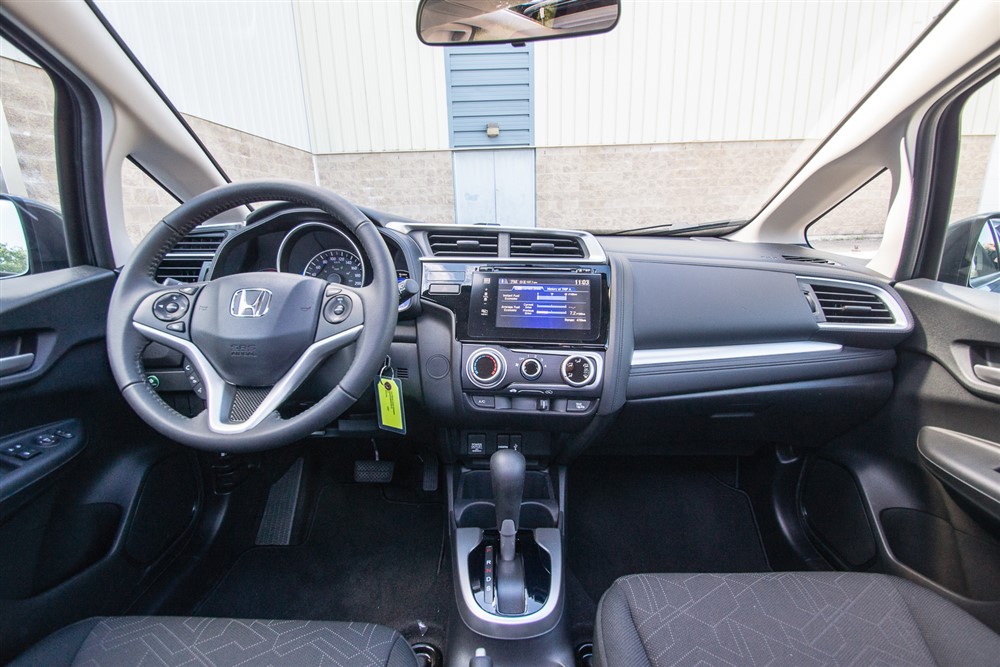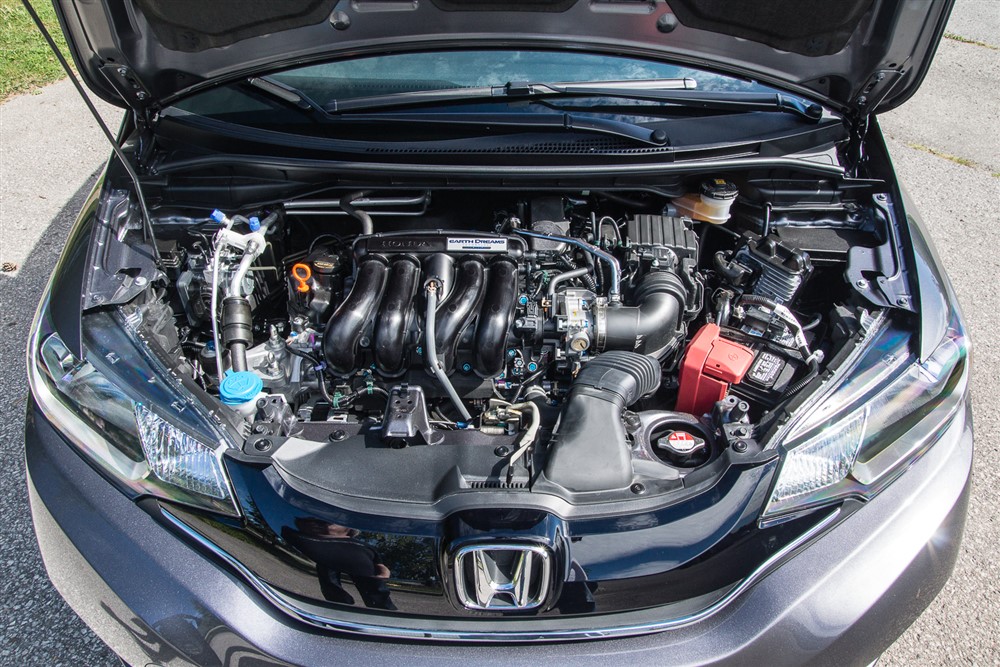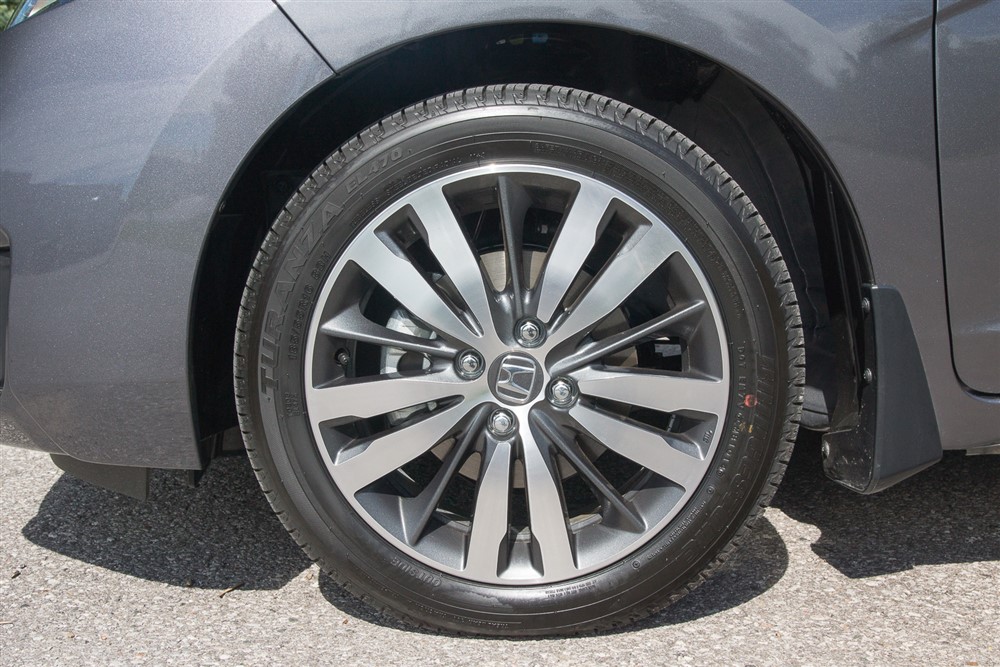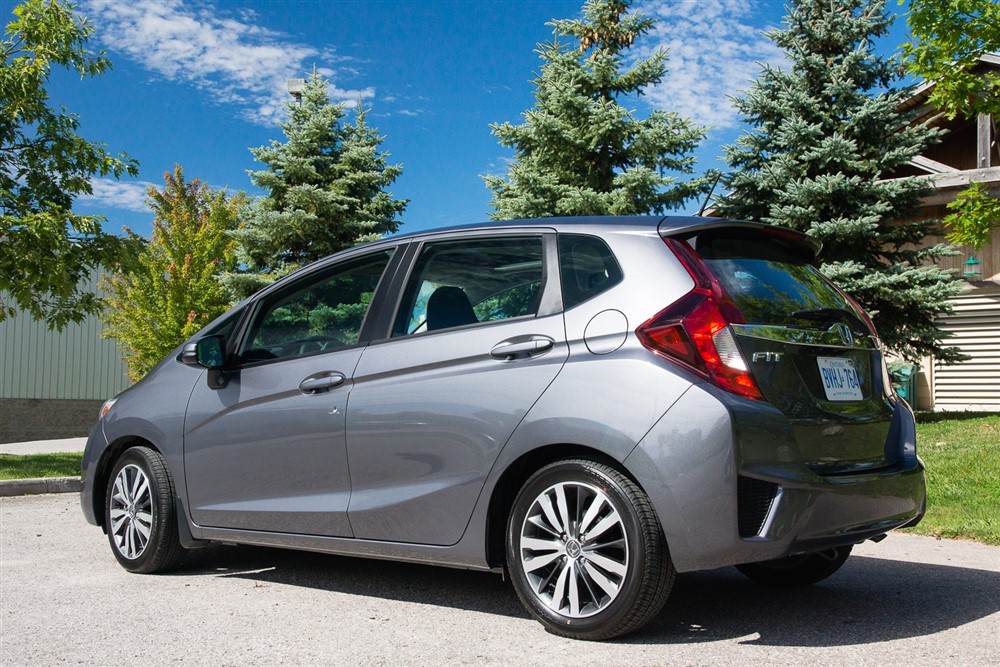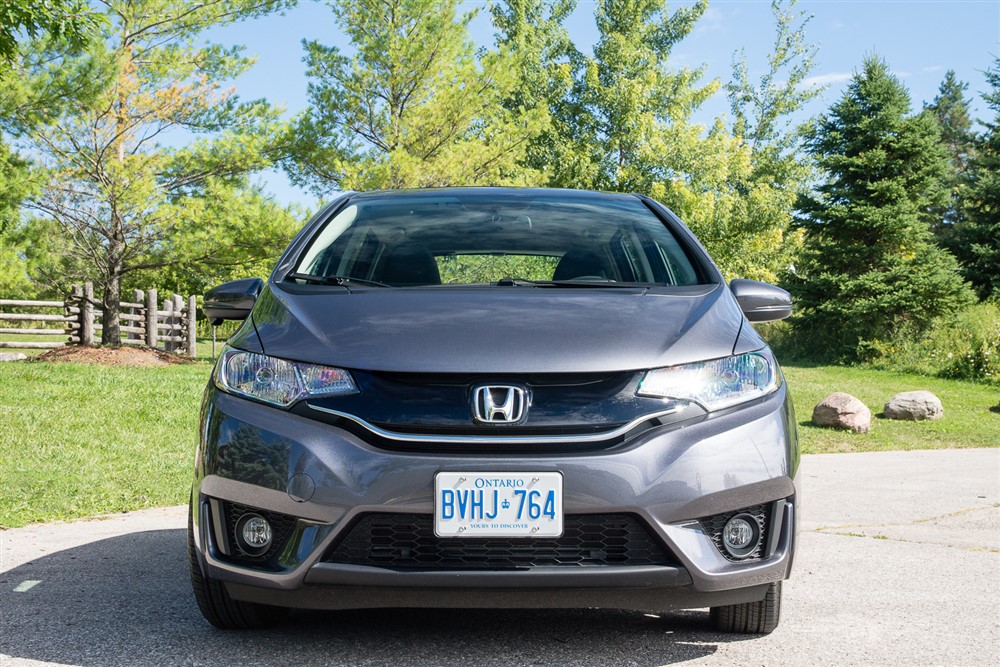As Honda’s portfolio evolves and grows with market trends, we’ve seen cars like the Civic and Accord grow in size. The Civic of today is about the same size of the Accord from twenty-five years ago. Canadians have always loved their small cars, so with the Civic being as big as it is, Honda brought over the Jazz from other world markets in 2007. The Fit is Honda’s new small car, but it’s safe to say that its aspirations were pretty big.
The first and second-generation Fit were small cars done in classic Honda style. Innovative packaging and a good mix of value, driving dynamics, and functionality made for strong sales. Honda is focusing more on the Fit, making it a “core product” in the Canadian market, just like the Civic, Accord, CR-V, and Odyssey – all best-selling vehicles.
Small is the new big, as they say – they wanted to show us why they were so proud of the new Fit. I was invited to check it out at the swanky Thompson Hotel in Toronto with a handful of media. We first scooted over to the 99Sudbury event complex and got an interactive hands-on with several cars. Artists were painting murals incorporating the Fit, and there were specialists on hand to show us how many boxes of stuff one could cram into the Fit, thanks to its unique packaging. The Magic Seat lets the Fit swallow up a ton of stuff. Bikes and canoes are swallowed up without difficulty (with the hatchback closed), and you can fully lay down and sleep in the “Relax” configuration with all the seats folded down.
We were up bright and early the next morning for a technical presentation. There was more discussion on the Fit’s innovative packaging, and a ton of new features – a lot that one wouldn’t expect in a subcompact at first glance. New for 2015 is the Earth Dreams powertrain, which is made up of a new 1.5L direct-injected twin-cam four-cylinder engine, good for 130hp. Also new is its pairing with a CVT transmission, which does a great job of improving fuel efficiency and making the most of the power delivery. A new six-speed manual transmission is available on all trim levels – an obvious nod to enthusiasts who prefer the control and feel that only a manual transmission can give you.
There are a lot of improvements in terms of its body structure, and further optimizations to the suspension geometry, both helping to deliver better ride quality and good feel from behind the wheel. Once we get some more seat time with the new Fit, we’ll be able to report more on specifics for how the Fit will fit in your daily grind. Outside, the Fit features less of an egg shape and more of a wedge shape, which is said to improve aerodynamics and noise-vibration-harshness ratings. The front-end adopts Honda’s latest corporate face, which we can see a little bit of on the Civic Si.
Inside, once you get over the amount of space available, you’ll probably notice the leather seat surfaces you’re sitting on. That’s right – leather is now available in the subcompact car that is the Honda Fit. Available on the top-shelf EX-L, you get leather throughout as well as satellite navigation – also a first for the Fit. People often think of having to lose out on such features when stepping into a subcompact car, but this is no longer the case with the Fit. Honda also throws in their LaneWatch blind-spot monitoring system and their new HondaLink system, which can pair and communicate with Smartphones, way more than what Bluetooth can muster. The quick takeaway is: Honda is not only letting you stuff the Fit with all your goods, but they’re also stuffing it full of features and value-adds that help set it apart from the rest.
The drive route let us get a feel for the new Fit in both a city environment, and on the open road. The car I hopped into was a Fit EX with the CVT. First impressions behind the wheel remind me of the latest Civic. Early CVTs across the industry were panned for their poor “feel” – Honda has largely resolved this in their current cars with some smart tuning as well as the use of a torque converter to help smoothly launch the car from a stop. If you pin the throttle to the floor, the CVT will pin the engine at its peak output speed and hold those revs as you increase speed. In normal day-to-day driving, the CVT is pretty quick to respond, impressively stepping down to give you more passing power. Shift paddles behind the steering wheel allow for some added control by way of virtual gears. They do emulate the sensation of going through seven gears, but the CVT works best when left alone.
Transmission aside, the rest of the Fit driving experience is familiar and those moving up from a previous-generation Fit will be right at home in the new 2015 model. The steering is typical modern Honda – electrically assisted but it feels about right for a modern setup. The longer wheelbase helps reduce some of the small-car jitters, and visibility is pretty good – the little windows ahead of the side mirrors are always a good help.
The planned route was about 120km long, and it included some stop-and-go sections (the “Don Valley Parking Lot”) and some open sections along the Donald Cousins Parkway. Our car was loaded up with two journalists and associated gear, and air conditioning was used for the entire duration of our drive. We certainly weren’t gentle with the accelerator. The numbers I ended up with are impressive: 5.8L/100km as per the onboard trip computer. Honda rates the Fit at 7.3L/100km in the city, 6.1L/100km on the highway, and 6.8L/100km in a combined cycle. Do note this is with the new governmental 5-cycle test methodology. The fact that we were able to easily exceed the ratings was great to see. Careful use of the accelerator should yield even better results. If one paid a little bit of attention to their driving habits, I’d be willing to bet on being able to hit the mid-5’s per 100km.
Honda has rejigged some of the trim levels for 2015. Gone is the top-end Sport model, with the LX and EX making up the bulk of expected sales. Pricing starts at $14,495 for the base DX with a six-speed manual transmission. The EX tester I drove for the day, as equipped starts at $20,495. The top-end EX-L with the CVT rings in at $22,595. Honda intends to sell about 14,000 Fits. Considering the strong feature-set and the unique marketing campaign aimed at people of all ages, I can see good days coming for Honda’s bottom line, and many happy years for new Fit owners.
For the urban do-everything kind of personality, the new 2015 Fit will fit your lifestyle. No longer is the subcompact an exercise in compromise. Smart design packaging, class-leading features, and a strong value focus means that the Fit can be a lot of car for a lot of people. Stay tuned here at DoubleClutch.ca for a full road test once we get our hands on the new Fit for our usual rundown.
First Drive: 2015 Honda Fit Gallery






